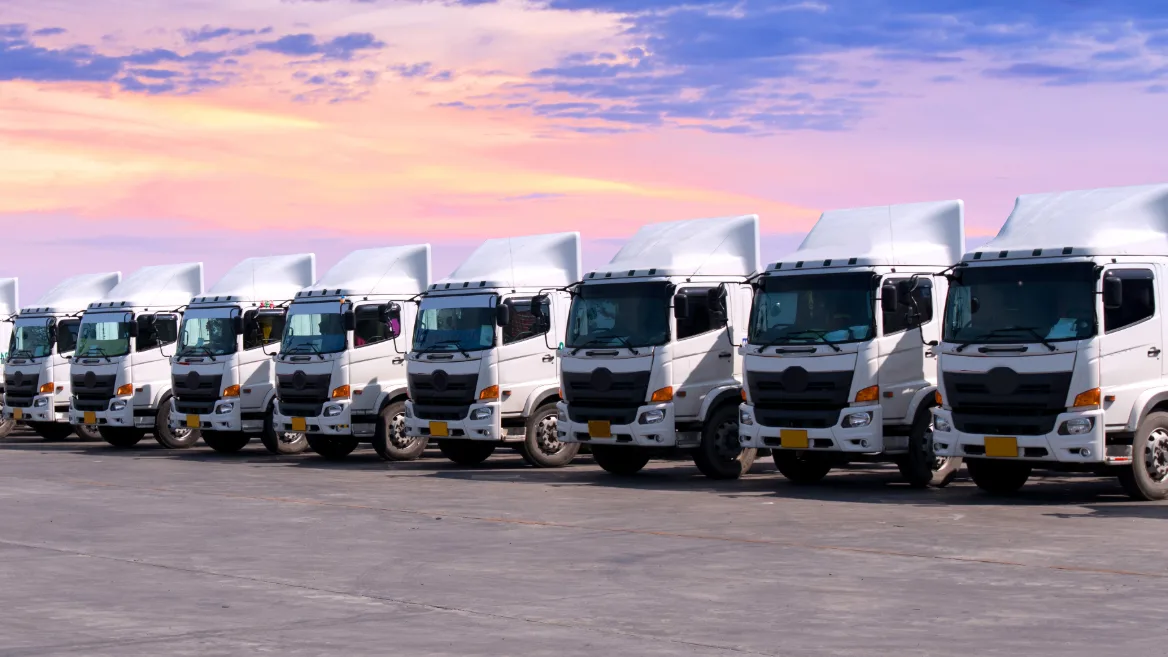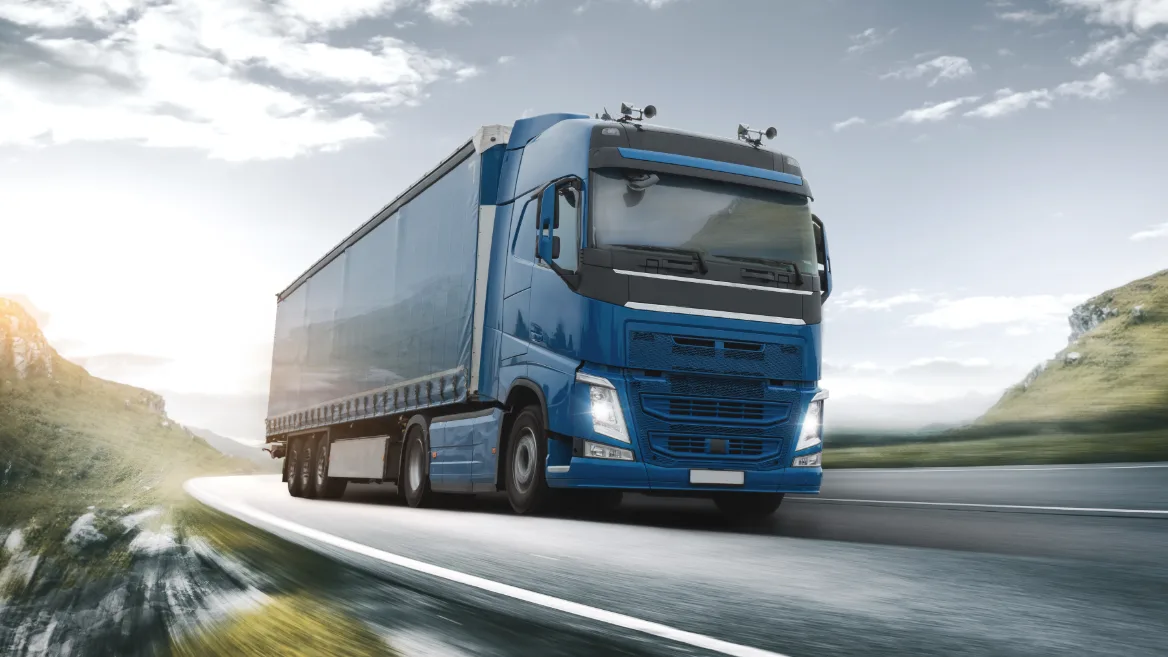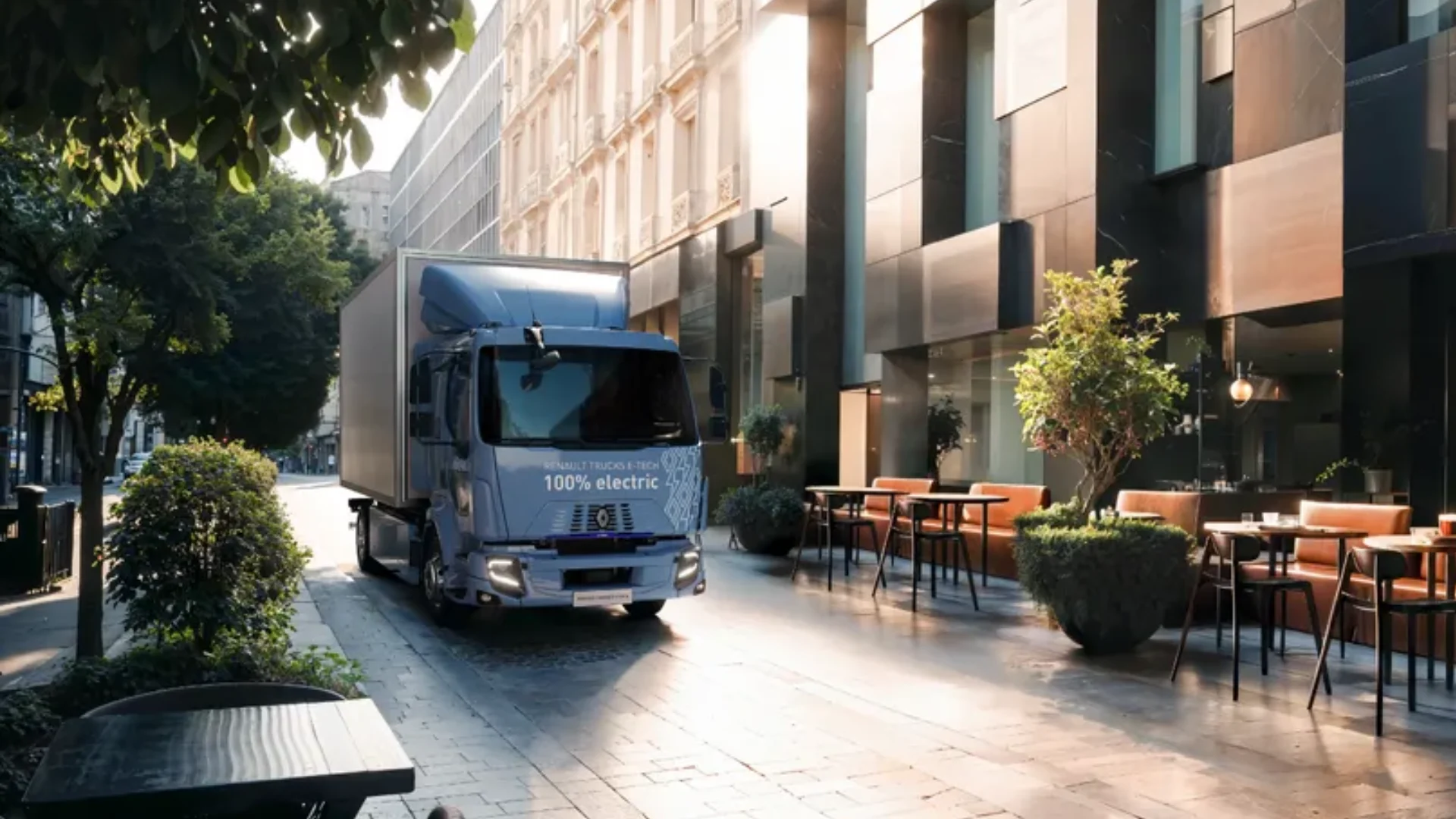Yard management sits between your transport plan and what actually happens on the ground at the gate, in the yard, and at the dock. It covers how trucks arrive, where trailers wait, how shunters move assets, and when doors turn for loading and dispatch.
A yard management system (YMS) gives you a live picture of vehicles, trailers, bays, people, and tasks in one place. In this guide, we’ll explain what yard management means for HGVs, how YMS tools work, the benefits for operators, and where the tech is heading next.
What we’ll cover
Fleets, bookings, subcontractors, compliance & payments.
With HX, you can manage them all in one place.
What is yard management in the context of HGVs?
Yard management brings order to the flow from gate arrival to departure with a signed manifest. It links check-in, yard slotting, shunter moves, dock scheduling, dwell tracking, and handover steps so each stage lines up with the next.
Think of it as the bridge between transport planning and warehouse execution for heavy vehicles. It fits in alongside your wider haulage and logistics stack, so planned runs land at the right door (and at the right time).
Why effective yard management matters for fleet operators
Poor yard flow burns paid driver hours and pushes dwell past your target window. It can trigger detention charges, late pick-ups, missed booking slots, and a scramble on overtime that hits margins.
A clear method cuts that waste and keeps everyone on the same page. With shared timestamps and simple rules, it’s much easier for transport managers, gate teams, shunters, and dock staff to move in sync.
Common problems in managing truck and trailer yards
Now that you understand the importance of effective yard management, you may be wondering what issues it can help to solve.
Some common problems in managing truck and trailer yards include:
- Losing track after entry: Paper notes don’t update once a truck is inside, so people phone around to find the right trailer.
- Rush hours create long queues: Bookings bunch together, which leaves some bays quiet later and drivers waiting now.
- Two jobs, one loading bay: Without live updates, urgent haulage loads clash at the same door while another bay sits free.
- Inefficient trailer moves: The small yard truck that shifts trailers does extra trips because tasks aren’t lined up.
- Trailers parked in the wrong place: Faded bay numbers and unclear signs mean staff walk the site to find what they need.
- Systems don’t talk to each other: What planning tools expect doesn’t match who is at the gate, so the schedule slips.
- Waiting time costs money: Queues at the gate and the bay eat paid driver hours and lead to extra fees.
- Safety steps get skipped: Under pressure, wheel blocks and dock lights get missed, which raises risk and slows recovery.
How yard management systems work for HGV fleets
A YMS starts at the gate with digital check-in so the driver confirms load ID, registration, trailer type, delivery window, and special handling notes. That data feeds the live plan and gives everyone the same view from the first minute.
From there, the system allocates a yard slot or sends the truck straight to a door if a bay is free. It also creates shunter tasks with clear pick, move, and park steps so the tug runs fewer dead legs.
When the unit reaches the dock, staff get a door assignment, safety prompts, and a short checklist for loading or tipping. The system records door open time, load start, load finish, door close, and departure so you have a clean trail.
If anything changes, the plan updates in real time and re-sequences moves to match. The control room spots delays early and adjusts without a pile of phone calls or radio cross-talk.
Core functions for managing trucks, trailers and drivers
Most platforms cover appointment scheduling, e-gate check-in, yard slotting, and dock scheduling. They pair these with shunter dispatch, trailer tracking, safety prompts, and departure checks for a tight loop.
Many systems add seal photos, damage capture, pallet counts, and carrier scorecards. They store dwell time, on-time performance, and first-time door accuracy so reporting is quick and useful, especially if you’re working with haulage subcontractors.
Typical YMS functions and what they change at the depot
| Function | What it does | Why it helps |
|---|---|---|
| Appointment scheduling | Sets arrival windows and pre-validates loads | Cuts branching and lowers gate queues |
| e-Gate check-in | Digitises driver and load details at entry | Speeds up entry and reduces errors |
| Yard slotting | Assigns safe parking and swap areas | Keeps trailers organised and easy to find |
| Dock scheduling | Matches doors to loads and labour | Reduces dwell-time |
| Shunter dispatch | Sends simple pick-up and drop-off jobs to the yard truck at the right time | Cuts empty trips and saves time |
| Trailer tracking | Logs locations and status changes | Prevents lost trailers |
| Safety workflows | Shows simple reminders to use wheel blocks, warning lights, etc. | Lowers risk of accidents |
| Departure control | Verifies paperwork and seal photos | Reduces risk of reworks and claims |
Integration with transport management and telematics
A good yard platform links to TMS, so planned arrivals and departures feed the gate schedule automatically. It shares actual arrival time, door time, and departure time back to planning, so the next run is based on real performance.
It can pull GPS, RFID, or UWB data for trailers and tractors from telematics so locations update without chasing on the radio. It can also post updates to a freight Exchange workflow so backhauls and spare capacity line up with real yard slots.
For mixed networks, many operators link with freight forwarders to keep handovers smooth between regional hubs and long-haul legs. That steady handoff lowers dwell-time at shared docks and keeps trailers moving.

Benefits of yard management for haulage companies
Yard management helps your depot run smoother while cutting wasted time and spending.
Next, we’ll go through how it reduces waiting costs, gives live visibility across trucks and trailers, and improves safety for drivers and yard teams.
1. Reduced truck idle times and waiting costs
Idle minutes creep into every part of the day when queues form. A clear gate plan and a fair bay queue cut those minutes down so drivers spend more time moving and less time waiting.
Line up pickups and drop-offs so the yard truck goes from one job straight to the next. That cuts empty driving and lets one truck handle more work without adding haulage vehicles.
2. Better visibility of HGV and trailer movements
With a live yard map, planners know where each trailer sits and which doors are free. That makes it easier to re-sequence work when a late truck or an urgent load arrives.
Trailer status flips automatically as moves finish and doors close. People stop searching and start doing, which improves throughput.
3. Improved safety for drivers and yard staff
Digital prompts set a steady routine for marshals, chocks, beacons, dock lights, and traffic flow. That guidance helps new staff get it right on busy shifts and keeps habits consistent.
Photo capture and timestamps support near-miss logs and claims defence. Plus, safer routines lead to fewer stoppages and quicker restarts after incidents.
How digital yard management improves fleet operations
Digital tools help teams make better calls during each peak, which keeps the day on track. A single dashboard replaces scattered notes and reduces the need for ad-hoc chasing.
Data adds a second set of eyes for managers looking across weeks rather than hours. Trends in dwell, door turns, and move time point to small changes that add up over a quarter.
You can spot routes or carriers that land outside the agreed window and adjust booking rules. You can tweak your haulage contracts, labour plans and yard zones so the pattern of work fits the pattern of arrivals and different lorry sizes.
Over time the depot runs with less stress and fewer surprises. In addition, drivers feel the difference and pass that smoother experience on to your haulage customers.
Use cases of YMS in large logistics and haulage fleets
National networks can run a shared view across RDCs and NDCs so trailers don’t vanish between sites. That shared view helps control repositioning costs and keeps doors busy rather than blocked.
Large operators with seasonal demand peaks can add temporary staff and still hold a steady process. Clear prompts let you slot people in quickly and protect service when volumes spike.
For mixed fleets that include eHGVs, the system can match high-power charge windows with door plans. That keeps charge-bay queues from clashing with outbound runs and prevents knock-ons across the shift.
Multi-brand groups can keep carrier scorecards in one place and lift performance through fair, shared data. That keeps partners engaged and outcomes steady without heavy admin.
If you run a large haulage business with complex flows, site-to-site visibility becomes a real advantage. If you run a small haulage business, the same tools can start simple but still cut waiting time.
Future trends in truck and fleet yard management
Yard management tools are changing quickly, especially as fleets grow, sites get busier, and electric HGVs become more common.
Here’s what we expect to see more of in the near future, and how these changes could shape how you run your yard:
- Live location tracking: Your trailers, trucks and courier vehicles will show up on a map in real time, so you won’t need to walk the yard to find things. It’ll make handovers quicker and cut wasted time.
- Online booking for arrival slots: Instead of chasing emails or spreadsheets, drivers and carriers will just pick a time through a link. That should spread out arrivals and reduce long queues.
- Smarter gate cameras: Number plates, seals, and dock checks will be captured automatically with photos or scans. It’ll save time at the gate and add proof when you need it.
- Charging included in the yard plan: Electric HGVs will need charging bays booked in the same way as loading bays. This will stop battery top-ups from clashing with scheduled departures. The government has a depot charging grant scheme that’ll cover up to 75% of installation costs.
- Easy-to-read dashboards: Yard teams will track things like waiting time, average dwell, and how often trailers get to the right door first try. Everyone can see what’s working and what needs a fix.
- Step-by-step prompts for new staff: Yard teams will get simple instructions on a screen or handheld device to guide the job. That means quicker training and fewer mistakes.
- Better links between systems: Yard software will talk to transport plans and truck trackers without retyping or chasing updates. Everyone will work from the same live info.
- Hands-free tools: Voice commands and wearables will help drivers confirm moves or ask for help without getting out. That’ll save time and reduce back-and-forth.
Frequently asked questions
What is a yard management system for HGV fleets?
It is software that coordinates gate moves, yard slotting, shunter tasks, dock scheduling, and departures for heavy vehicles. It gives teams a live picture so trucks, trailers, and people move in the right order.
Is a YMS suitable for small haulage fleets, or only large operators?
Smaller fleets can start with appointments, e-gate check-in, and a simple dock plan, then add tracking or shunter dispatch later. Larger networks can run multi-site views and richer analytics without losing local control.
Can a YMS help manage trailers as well as trucks?
Yes, trailer tracking sits at the heart of most platforms with clear status, location, and movement history. It helps planners direct shunters and keep swap areas tidy, which cuts wasted time.
Do yard management systems integrate with telematics and fleet tracking?
Most platforms connect to TMS, telematics, and warehouse systems so data flows both ways. That lets planners match the plan to what is happening in the yard without retyping details.




